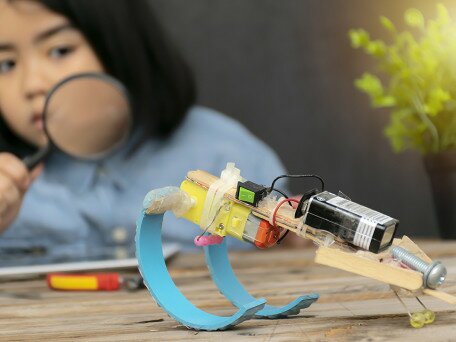Enhancing emotion understanding and theory of mind via block building
- 项目计划:
- 杰出青年学者计划
- 项目年份:
- 2019/2020
- 项目负责人:
- 萧狄诗博士
- (幼儿教育学系)

Building on the embodied notion of cognition, here I propose that simulating another person’s visuospatial experience can also facilitate our representation of that person’s mind.
Theory of mind refers to the ability to represent one’s own and others’ mental states such as intention, desire, emotion, and belief (Premack & Woodruff, 1978). Individual differences in theory of mind have mostly been attributed to language ability and verbal interaction (Milligan, Astington, & Dack, 2007; Harris, de Rosnay, & Pons, 2005). Hence the existing theory-of-mind training is largely language-based. Building on the embodied notion of cognition, here I propose that simulating another person’s visuospatial experience can also facilitate our representation of that person’s mind. I design two training studies to test this thesis. Study 1 first determines if training in visuospatial perspective-taking improves emotion and mind understandings. I recruit 80 typically-developing 4.5-year-olds and randomly assign them to engage in either altercentric block building or egocentric block building. In the altercentric training I specifically train children to be visuospatial perspective-takers by asking them to imagine how a model figure looks for another person and to build a figure that looks the same as this mental representation. In contrast, children in the egocentric training are asked to reproduce the model figure according to their own visual frame; no visuospatial perspective-taking is involved. I expect that children who receive the altercentric training would improve more than those from the egocentric group on emotion understanding and theory of mind, and that the enhanced emotion and mind understandings can be attributed to the visuospatial perspective-taking training. Study 2 goes on to compare the relative importance of visuospatial perspective-taking and verbal interaction in developing mental state understandings. A total of 120 4.5-year-olds are randomly assigned to participate in either (a) socialised altercentric block building (both visuospatial perspective-taking and verbal interaction), (b) parallel altercentric block building (visuospatial perspective-taking only), or (c) paired dialogic reading (verbal interaction only). The findings would show whether simulating others’ visuospatial experiences in the absence of verbal communication is sufficient to promote emotion and mind understandings, or whether verbal interaction is necessary to support children’s developing ability to represent mind states. Theoretically speaking, the potential causal link between visuospatial perspective-taking and theory of mind may cast new light on what underlies the emergence of mental state understandings. This research also has direct practical implications. If visuospatial perspective-taking training in the form of block building is found effective, we can popularise it to enrich the conventional language-based theory-of-mind training.








